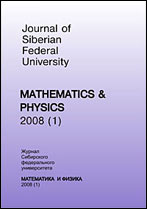|
|
Journal of Siberian Federal University. Mathematics & Physics, 2010, Volume 3, Issue 1, Pages 3–22
(Mi jsfu99)
|
|
|
 |
Carbon Nanotube: Story in Ando Laboratory
Yoshinori Ando
Department of Materials Science and Engineering, Meijo University, Nagoya, Japan
Abstract:
Carbon nanotubes (CNTs) were serendipitously discovered as a byproduct of fullerenes by direct current (DC) arc discharge; and today this is the most-wanted material in the nanotechnology research. In this brief review, I begin with the history of the discovery of CNTs and focus on CNTs produced by arc discharge in hydrogen atmosphere, which is little explored outside my laboratory. DC arc discharge evaporation of pure graphite rod in pure hydrogen gas results in multi-walled carbon nanotubes (MWCNTs) of high crystallinity in the cathode deposit. As-grown MWCNTs have very narrow inner diameter. Raman spectra of these MWCNTs show high-intensity G-band, unusual high-frequency radial breathing mode at 570 cm$^{-1}$, and a new characteristic peak near 1850 cm$^{-1}$. Exciting carbon nanowires (CNWs), consisting of a linear carbon-chain in the center of MWCNTs are also produced. Arc evaporation of graphite rod containing metal catalysts results in single-wall carbon nanotubes (SWCNTs) in the whole chamber like macroscopic webs. Two kinds of arc method have been developed to produce SWCNTs: Arc plasma jet (APJ) and Ferrum-Hydrogen (FH) arc methods. Some new purification methods for as-produced SWCNTs are reviewed. Finally, double-walled carbon nanotubes (DWCNTs) are also described.
Keywords:
carbon nanotubes, synthesis methods.
Received: 10.01.2010
Received in revised form: 30.01.2010
Accepted: 20.02.2010
Citation:
Yoshinori Ando, “Carbon Nanotube: Story in Ando Laboratory”, J. Sib. Fed. Univ. Math. Phys., 3:1 (2010), 3–22
Linking options:
https://www.mathnet.ru/eng/jsfu99 https://www.mathnet.ru/eng/jsfu/v3/i1/p3
|

| Statistics & downloads: |
| Abstract page: | 579 | | Full-text PDF : | 177 | | References: | 59 |
|




 Contact us:
Contact us: Terms of Use
Terms of Use
 Registration to the website
Registration to the website Logotypes
Logotypes








 Citation in format
Citation in format 